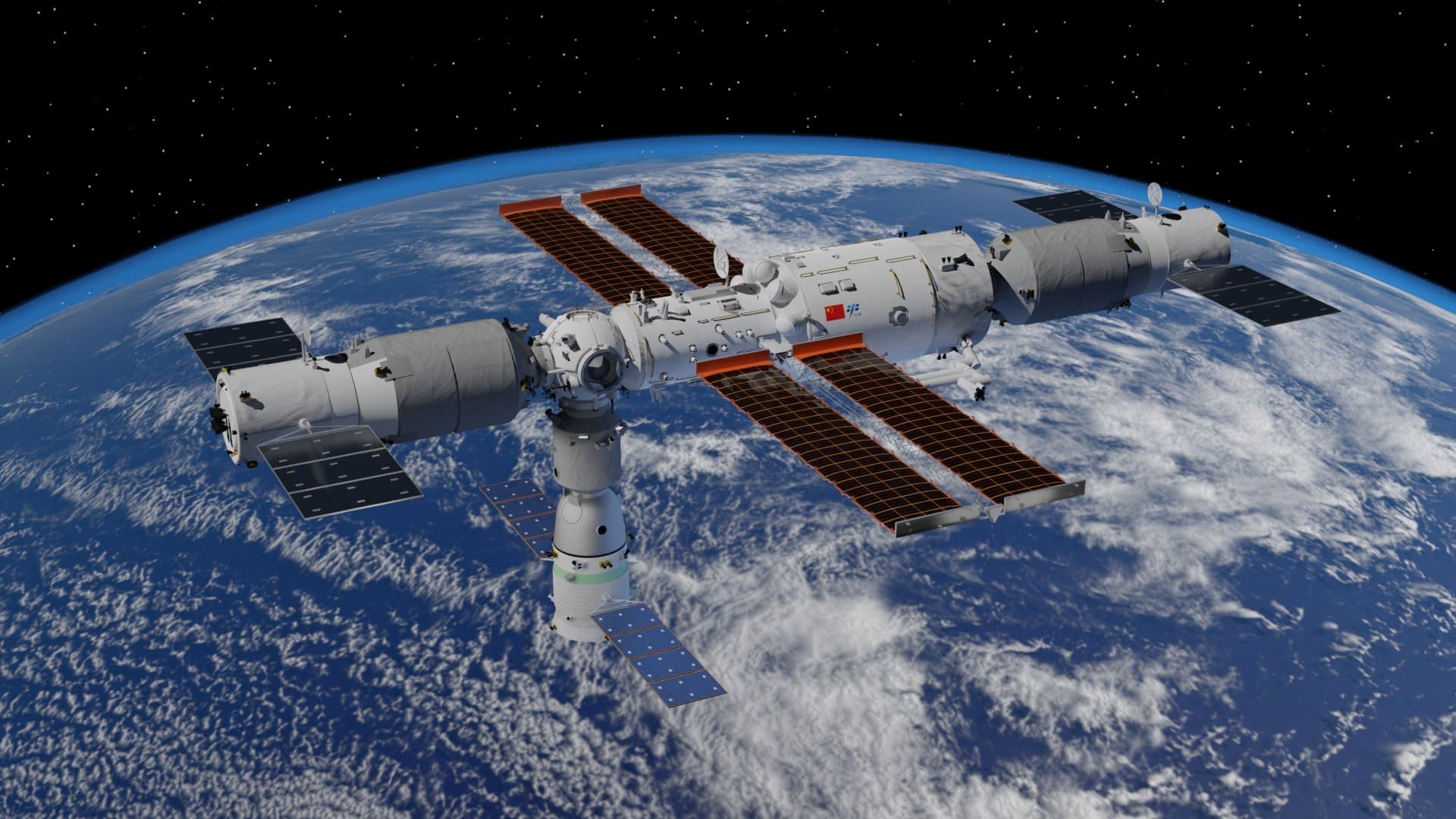Debunking Tiangong Space Station Water Myths: Science Explained
Explore how the Tiangong space station’s glass of water debunks zero-gravity myths, revealing the fascinating physics behind liquid behavior in microgravity and China’s verified space achievements.

Key Takeaways
- Water clings to glass in microgravity due to surface tension.
- Tiangong’s glass of water is secured, disproving floating claims.
- Ping-pong ball experiment confirms true microgravity physics onboard.
- China’s space program is internationally verified and technologically advanced.

When a simple glass of water sparked a whirlwind of conspiracy theories online, many questioned the authenticity of China’s Tiangong space station footage. How could water sit still in a weightless environment where everything floats? This puzzle captivated viewers and fueled skepticism about China’s space program. Yet, science and expert insights reveal a different story. The Associated Press, alongside researchers from the University of Chicago and Manchester, clarified the physics behind the scene: water molecules cling together and to glass surfaces, maintaining shape even in microgravity. China’s astronauts further demonstrated this with a ping-pong ball suspended underwater, a feat impossible on Earth. This article unpacks the truth behind the viral video, debunks myths, and highlights China’s verified space achievements, offering a fresh perspective on space science and public perception.
Understanding Microgravity Physics
Imagine floating in a world where gravity’s grip loosens to a whisper. That’s microgravity, the environment aboard the Tiangong space station. Here, objects don’t behave like they do on Earth. Water, for instance, doesn’t simply pour or spill; it clings. Jordan Bimm, a space historian at the University of Chicago, explains that water molecules prefer sticking to each other and to glass surfaces rather than dispersing into the air. This molecular loyalty, powered by surface tension, creates the illusion that water is sitting still in a glass, even though gravity is nearly absent.
This phenomenon isn’t just theoretical. Astronauts aboard the International Space Station have shown similar behavior, where water forms floating spheres rather than flowing freely. The Tiangong video’s glass of water, therefore, isn’t a cinematic trick but a real demonstration of physics in action. Understanding these subtle forces helps us appreciate the complex dance of molecules in space and dismantles the simplistic notion that zero gravity means chaos everywhere.
Debunking the Floating Glass Myth
The heart of the conspiracy claims was simple: if there’s no gravity, why isn’t the glass itself floating away? This question sparked wild theories about staged footage. However, the Chinese space agency addressed this head-on by sharing behind-the-scenes footage showing astronaut Wang Yaping securing the glass to the table with adhesive strips. This practical step ensures the glass stays put, proving that the stillness wasn’t an oversight but a deliberate safety measure.
Moreover, the concern about risking delicate instruments with an unsecured glass overlooks the meticulous protocols astronauts follow. The adhesive strips are a small but crucial detail that keeps the environment safe and orderly. This transparency from China’s crewed space program not only quashes doubts but also highlights the professionalism and care invested in space operations.
Validating Space Science with Experiments
Beyond securing the glass, the Tiangong crew conducted a clever experiment to showcase microgravity’s effects. They submerged a ping-pong ball in the water inside the glass. On Earth, buoyancy would push the ball to the surface, but in the weightless environment of Tiangong, the ball remained suspended underwater. This visual proof aligns perfectly with known physics and offers a compelling counterpoint to conspiracy theories.
Molly Silk, a researcher at the University of Manchester, emphasized the improbability of faking such footage, noting China’s little incentive to deceive and the international verification of the space station’s existence. This experiment not only educates but also reassures viewers that what they see is genuine science unfolding in orbit, not a Hollywood set.
China’s Space Program: Fact Over Fiction
Skepticism about China’s space achievements often overlooks the country’s vast technological capabilities and verified milestones. The Tiangong space station is a real, functioning orbital laboratory, confirmed by multiple international actors, including the United States. China’s recent missions, like Chang'e 6 returning lunar samples and sharing Chang'e 5 moon rocks with UK scientists, underscore its serious commitment to space exploration.
These accomplishments reflect a nation leveraging its size, population, and tech prowess to stake a claim in the final frontier. The glass of water controversy, while captivating, distracts from the impressive reality of China’s space program. Recognizing this helps shift the narrative from suspicion to respect for scientific progress.
Embracing Science Amid Skepticism
The viral glass of water video is a perfect storm of curiosity, misunderstanding, and misinformation. It reminds us how easily scientific phenomena can be misinterpreted without context. The truth, supported by physics and firsthand astronaut demonstrations, is far more fascinating than conspiracy.
For those watching from Earth, it’s an invitation to embrace critical thinking and appreciate the wonders of space science. The Tiangong space station isn’t just a backdrop for viral videos; it’s a beacon of human ingenuity and international collaboration. By peeling back myths and focusing on facts, we enrich our understanding and fuel our collective imagination about what’s possible beyond our planet.
Long Story Short
The tale of the still glass of water aboard Tiangong is more than a viral curiosity—it’s a lesson in physics and the pitfalls of quick assumptions. Surface tension and molecular bonds explain why water behaves differently in microgravity, while the Chinese space agency’s transparent demonstrations reinforce authenticity. Far from a hoax, Tiangong stands as a testament to China’s growing prowess in space exploration, validated by international observers including the US. For skeptics and enthusiasts alike, this episode underscores the importance of scientific literacy and critical thinking in an age of misinformation. Next time you see a glass of water floating—or not—in space, remember the invisible forces at play and the remarkable human ingenuity orbiting above us.